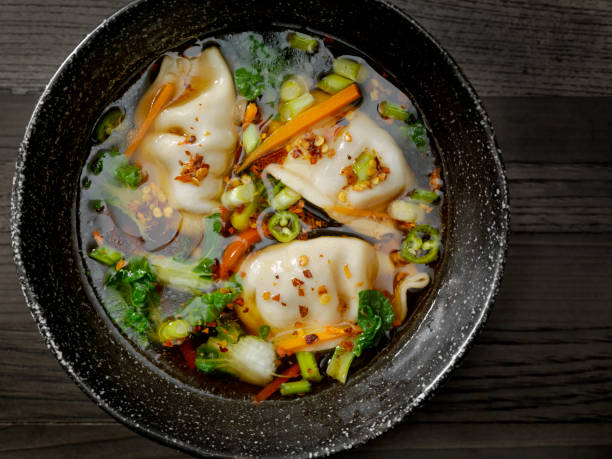What is tomato chutney
Tomato chutney (or thakkali Chutney) is a popular Indian condiment that’s served as a side dish with many South Indian meals and snacks. This vibrant red Chutney is a staple in Indian homes. It consists of tomatoes that have been simmered with a mixture of spices until they become soft and thickened.
Tomato chutney can be made gluten-free. It is a great source of vitamin A and vitamin C, as well as potassium and calcium. The condiment can be served with a variety of snacks and dishes, such as flatbreads, samosas and pakora, and fries.
Three ways to use tomato Chutney
Think of tomato chutney as a spice-forward tomato dip if you’re new to it. Here are some ways you can use this condiment.
With Chaat: You can serve tomato chutney with many types of street food, such as samosa and pakora.
With flatbread or pancakes. For an authentic Indian breakfast spread, serve tomato sauce with paratha ( roti) or any other dosa, such as fluffy steamed idli or uttapam, moong dal pancakes, or besan chilla.
On fries, hamburgers, and more, You can add tomato chutney to fries, hot dogs, and hamburgers in a similar way to ketchup.
Six varieties of Chutney
Tomato chutney can be one of many types of Chutney that are used across the Indian subcontinent. These are the most well-known:
Apple Chutney: Apple chutney is made with diced apples, spices, butter, vinegar, or citrus juice. Apple Chutney does not usually contain sugar but relies on the mild sweetness from the cooked apples to balance out the savory and sometimes heat notes of the spices.
Coconut Chutney: This South Indian-style coconut sauce is made with fresh coconut meat and lentils such as chana or urad, ginger, fresh chilies, or dried chilies. It’s topped with blistered Curry leaves.
Green Chutney: This is a combination of finely chopped fresh herbs such as mint and cilantro, along with sugar, salt, and citrus juice.
Mango Chutney: Indian mango chutneys are made from stewed, ripe fruits, spices, and distilled vinegar. Mango Chutney tends to be sweeter than salty, in contrast to aam ka achar or spicy mango pickle.
Onion Chutney: This Onion Chutney uses the same recipe as coconut chutney but substitutes coconut meat for chopped onion and shallots. Some recipes include dried tamarind.
Tamarind Chutney: This tangy-sweet tamarind or imli, or Chutney, has a loose consistency that can be poured. It can be used as a drizzle or dip.
Tips for Making Tomato Chutney
South Indian chutneys are sweet and mellow or spicy and hot. This is how to improve or develop your tomato chutney recipes:
Temper whole spices: Indian cuisine uses tempering to fry whole spices in oil or butter before adding aromatics such as onion, ginger, garlic, and so on. This is called tadka or tarka. This technique allows the flavors of seeds or dried lentils, such as urad dal, to be released and creates an aromatic base for all subsequent steps. For the best results, add any ground spices towards the end of cooking.
Taste the tomatoes: You can use fresh or canned tomatoes to balance the acidity. The season, ripeness, and variety of individual tomatoes will affect the flavor of the Chutney. You can increase the acidity in dull tomatoes by adding dried tamarind, vinegar, or citrus juice. If necessary, you can temper high acidity levels with some sugar.
Seed the tomatoes to get a smoother texture Many Indian recipes for tomato sauce use only the inner flesh. Make a small X in the base of your tomato to remove the skin. Next, blanch the tomato in boiling water or put it in a bowl filled with ice water for five mins until the skin shrivels. Then, peel off the skin gently. You can also use an immersion blender to blend the Chutney into a smooth paste.
Make it spicy – To make spicy tomato sauce, you can increase the amount of red chili powder (paprika or dried Kashmiri Chili) in your recipe. You can also add fresh green chilies to the mixture.
Ingredients
Two tablespoons vegetable oil or ghee, plus one teaspoon
One tablespoon mustard seeds, plus one teaspoon
One tablespoon of cumin seeds
One teaspoon of whole coriander seeds
One dried red chili
Three garlic cloves minced
One small onion, roughly chopped
4–5 large tomatoes, medium diced
One small green chili stemmed and seeded, finely chopped.
Kosher salt and freshly ground black pepper
¾ cup brown sugar or jaggery
One tablespoon of apple cider vinegar
Two teaspoons of ground ginger
½ teaspoon ground turmeric
Optional: ¼ teaspoon asafoetida (hing)
Optional: 1 sprig of fresh curry leaves or dried fenugreek leaves (Kasuri methi)
Over medium heat, heat two tablespoons of oil or ghee and fry the mustard seeds and cumin seeds, coriander, and dried red chili. When they start to pop, add the onion and garlic, and saute until fragrant.
Season the mixture with salt and pepper. Mix well and continue to cook the tomatoes until they are tender and begin to break down.
Mix the brown sugar with the apple cider vinegar, and stir to combine.
Stir in the ground ginger, curry, and asafoetida, if any, and mix well. Cook the mixture for another 5-10 minutes or until it thickens slightly. Adjust the seasoning to your preference. Transfer the Chutney into serving bowls.
Heat the remaining tablespoon of oil or ghee in a small saucepan to make the final tadka. Once the oil has heated, add the curry leaves and one teaspoon of mustard seeds to the pan. Fry the leaves until they crackle and the seeds begin to pop. Serve the Chutney with the tadka.
The MasterClass Annual Membership will help you become a better chef. Get exclusive video lessons from the best chefs in the world, such as Madhur Jaffrey and Gabriela Camara, Niki Nagayama, Chef Thomas Keller, Yotam Ottolenghi, Alice Waters, and Gordon Ramsay.




